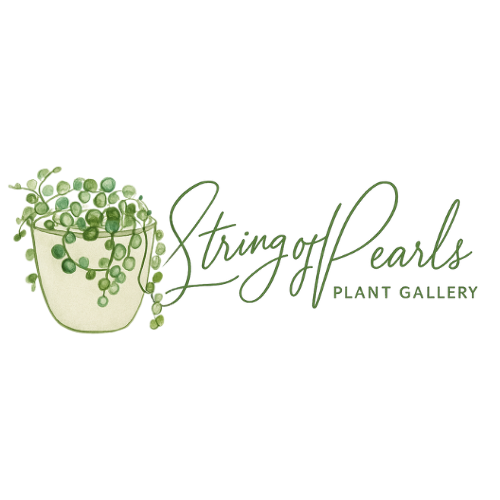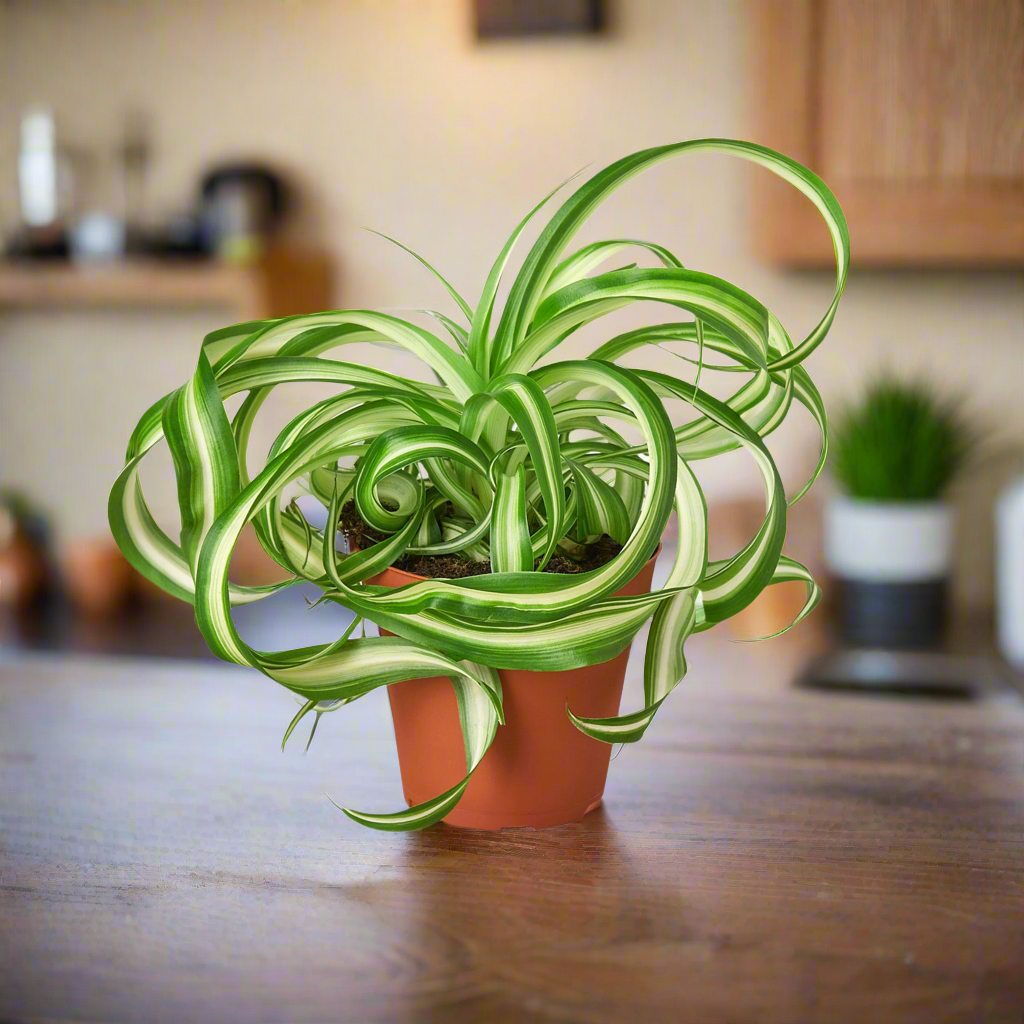The Spider Plant (Chlorophytum comosum) is a beloved and timeless houseplant, known for its cascading green and white striped leaves and its resilience in various environments. Its ability to thrive with minimal care makes it perfect for both beginners and seasoned plant enthusiasts. Native to tropical and southern Africa, the Spider Plant adapts well to indoor living and is an excellent natural air purifier. In this guide, we provide essential care instructions, along with acclimation tips for plants recovering from shipping or cold weather exposure.
Care Instructions
Light
Spider Plants thrive in bright, indirect light but can tolerate a range of lighting conditions, including low light. Direct sunlight can scorch the leaves, so avoid placing them in intense afternoon sun. An east-facing window is ideal.
Watering
Allow the top 1-2 inches of soil to dry out between waterings. Overwatering can lead to root rot, while underwatering may cause leaf browning. Use filtered or distilled water if your tap water is high in fluoride or chlorine, as these chemicals can cause leaf tips to brown.
Humidity
While Spider Plants are not overly fussy about humidity, they do appreciate moderate levels (40-60%). If your home is particularly dry, especially in winter, consider misting the plant occasionally or using a pebble tray to increase humidity.
Temperature
Spider Plants prefer temperatures between 65°F and 75°F (18°C to 24°C). They are sensitive to frost, so avoid exposing them to temperatures below 50°F (10°C).
Soil
A well-draining potting mix is ideal. A standard houseplant soil works well, but adding perlite or sand can improve drainage and aeration.
Fertilizer
Feed Spider Plants with a balanced, water-soluble fertilizer every 4-6 weeks during the growing season (spring and summer). Reduce feeding in the fall and winter when the plant's growth slows.
Pruning and Maintenance
Remove any yellow or brown leaves to keep the plant looking tidy. Prune the long stems of "spiderettes" (baby plants) if you prefer a neater appearance or wish to propagate them.
Acclimation Instructions
After Shipping
Shipping can be stressful for plants. Follow these steps to help your Spider Plant recover:
-
Inspect the Plant: Remove the packaging and check for damage or pests. Trim any damaged or yellowing leaves.
-
Rehydrate: If the soil is dry, water the plant thoroughly but ensure excess water drains away. Avoid letting the plant sit in water.
-
Gradual Light Exposure: Place the plant in a shaded area for the first 2-3 days to help it acclimate. Gradually move it to a brighter spot with indirect light.
-
Monitor Humidity: Increase humidity using a humidifier or pebble tray, especially if the plant appears dry or wilted.
-
Wait to Repot: Allow the plant at least 2 weeks to acclimate before repotting, unless the soil condition is very poor.
After Cold Weather Exposure
If your Spider Plant has been exposed to cold weather, extra care is necessary:
-
Warm Recovery: Move the plant to a warm, draft-free area. Avoid sudden temperature changes or placing it near heating vents.
-
Inspect for Damage: Check for signs of frost damage, such as mushy or discolored leaves. Remove these leaves with clean scissors.
-
Hydrate Carefully: Water sparingly at first, ensuring the soil is evenly moist but not waterlogged.
-
Boost Humidity: Cold exposure can dry out plants. Mist the plant lightly or use a humidifier to aid recovery.
-
Monitor Progress: Watch for new growth as a sign of recovery. Be patient, as the plant may take time to bounce back fully.
Common Issues and Solutions
-
Brown Leaf Tips: Often caused by overwatering, underwatering, or fluoride in tap water. Adjust watering habits and consider using filtered water.
-
Yellowing Leaves: This can indicate overwatering or poor drainage. Check the soil and adjust your watering routine.
-
Spiderettes Not Forming: Insufficient light or nutrients may hinder the growth of "babies." Ensure the plant receives adequate light and feed it during the growing season.
-
Pest Infestations: Common pests include spider mites and mealybugs. Treat with neem oil or insecticidal soap as needed.

